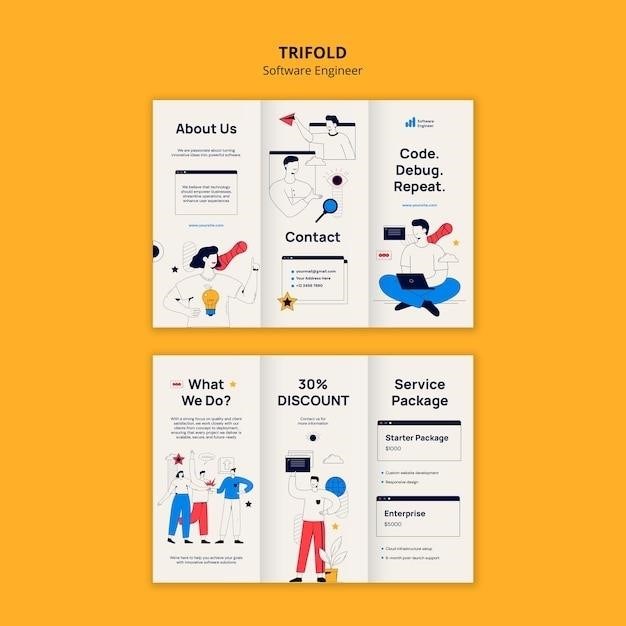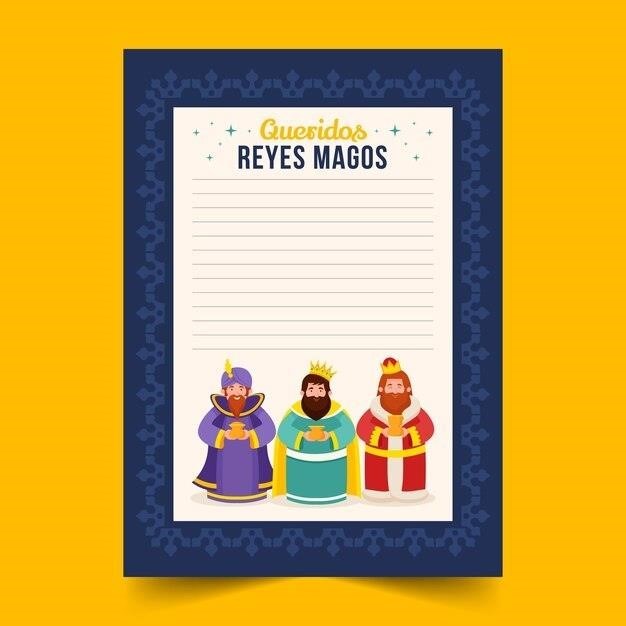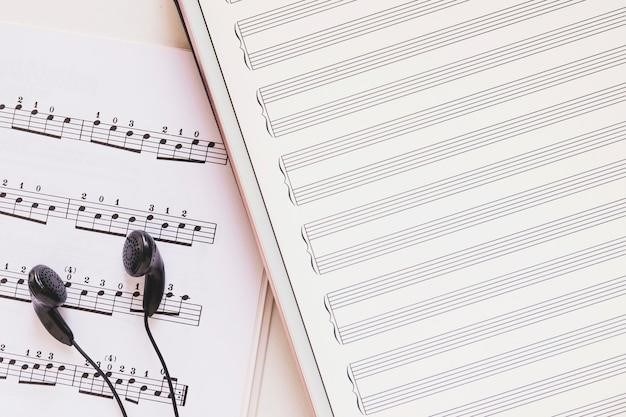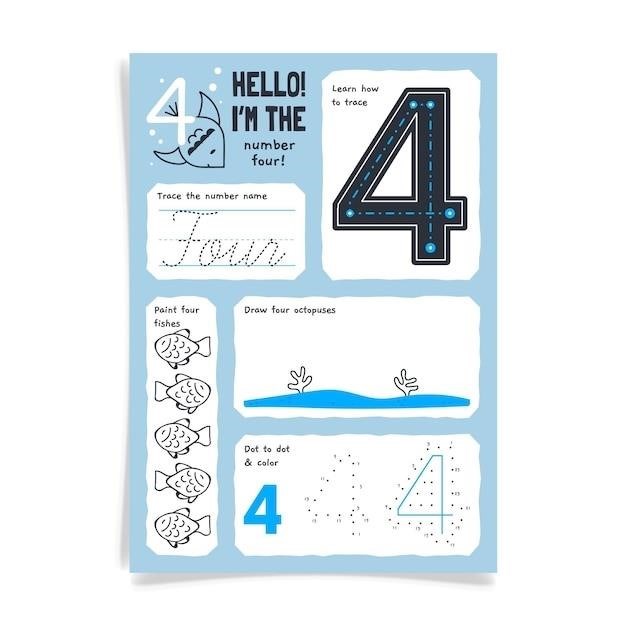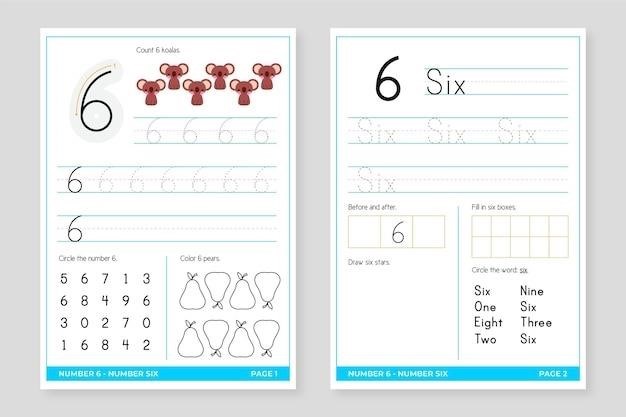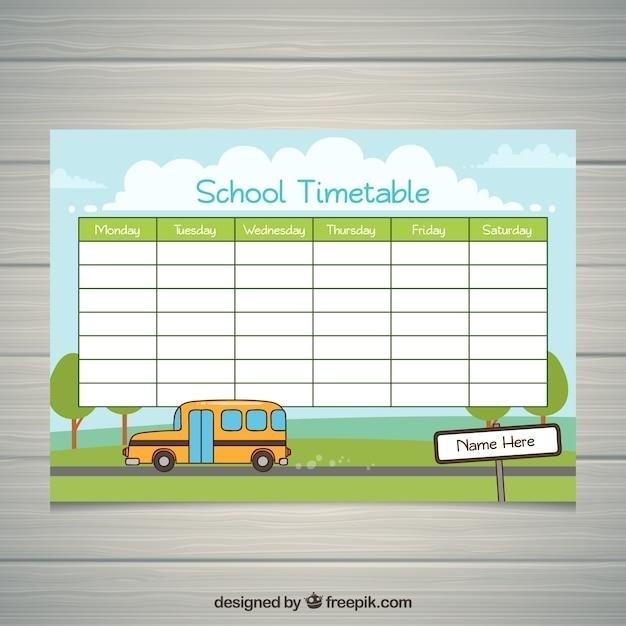Debt Snowball Worksheet Answers PDF⁚ A Comprehensive Guide
This comprehensive guide delves into the world of debt snowball worksheets, providing a step-by-step understanding of this popular debt reduction method. Learn how to create, utilize, and find free debt snowball worksheets to effectively manage your debt and achieve financial freedom.
Introduction
In the realm of personal finance, tackling debt is a common goal for many individuals. The journey to financial freedom often involves strategic debt reduction strategies, and the debt snowball method stands out as a popular and effective approach. This method, popularized by financial expert Dave Ramsey, focuses on paying off debts in order of smallest balance to largest balance, regardless of interest rates. The debt snowball worksheet serves as a crucial tool in this process, providing a visual representation of your debts, their balances, and a roadmap for achieving your debt-free goals.
This comprehensive guide aims to equip you with the knowledge and resources necessary to effectively utilize debt snowball worksheets. We will explore the core principles of this method, highlight its benefits, and provide a detailed breakdown of how to create and use these worksheets to streamline your debt repayment journey. Whether you are just starting your debt-reduction journey or seeking to optimize your existing approach, this guide will serve as a valuable resource.
What is the Debt Snowball Method?
The debt snowball method is a popular debt reduction strategy that prioritizes paying off debts from smallest to largest balance, regardless of interest rate. This approach, often advocated by financial guru Dave Ramsey, is designed to build momentum and motivation as you progress towards your debt-free goal. Instead of focusing on minimizing interest charges, the debt snowball method emphasizes the psychological benefits of quickly eliminating smaller debts, providing a sense of accomplishment and boosting your confidence to tackle larger debts.
Here’s how it works⁚ You list all your debts in ascending order of balance, from smallest to largest. You then make minimum payments on all debts except for the smallest one. You dedicate as much extra money as possible to the smallest debt, paying it off as quickly as you can. Once the smallest debt is paid off, you roll the minimum payment you were making on that debt into the next smallest debt, increasing the amount you are paying towards that debt. You continue this process, adding the minimum payments from paid-off debts to the next smallest remaining debt, creating a snowball effect of growing payments.
How the Debt Snowball Method Works
The debt snowball method is a straightforward process that relies on consistent effort and a strategic approach to debt repayment; The key is to create a clear plan and track your progress, which is where a debt snowball worksheet comes in handy. This worksheet allows you to visualize your debts, prioritize them, and monitor your progress as you systematically work your way through them.
Here’s a detailed breakdown of the process⁚
- List Your Debts⁚ Begin by creating a list of all your debts, including the name of the creditor, the current balance, and the minimum monthly payment. Order them from smallest balance to largest balance.
- Make Minimum Payments⁚ Make the minimum payment on all debts except the smallest one. This ensures that you avoid any late fees or negative impacts on your credit score.
- Attack the Smallest Debt⁚ Direct as much extra money as you can towards the smallest debt, aiming to pay it off as quickly as possible. This could include any additional funds you have available, extra income, or even a side hustle. The goal is to create a sense of momentum and build confidence.
- Snowball Effect⁚ Once you have paid off the smallest debt, take the minimum payment you were making on that debt and add it to the payment you are making on the next smallest debt. This “snowball” effect increases the amount you are paying towards each debt, accelerating your progress.
- Repeat⁚ Continue this process, systematically working your way down the list of debts, rolling the minimum payments from paid-off debts into the next smallest remaining debt. This strategy allows you to gain momentum and see tangible progress, which can be a powerful motivator.
Benefits of Using a Debt Snowball Worksheet
Using a debt snowball worksheet offers several advantages that can significantly contribute to your debt repayment journey. These benefits go beyond simply organizing your debts; they provide a structured framework that fosters motivation, accountability, and a sense of accomplishment. Here are some key benefits of incorporating a debt snowball worksheet into your debt reduction strategy⁚
- Visual Clarity⁚ A debt snowball worksheet provides a visual representation of your debts, allowing you to see the big picture. This clarity can help you understand the scope of your debt, prioritize your repayment efforts, and track your progress over time.
- Motivation and Momentum⁚ The debt snowball method encourages you to focus on achieving quick wins by paying off smaller debts first. This can be a powerful motivator, as you experience the satisfaction of seeing those debts disappear, creating a sense of momentum and confidence to tackle larger debts.
- Accountability and Tracking⁚ A debt snowball worksheet provides a structured framework for tracking your payments, interest rates, and remaining balances. This helps you stay accountable to your debt reduction plan, making it easier to stay on track and avoid falling behind.
- Financial Discipline⁚ The process of creating and using a debt snowball worksheet encourages financial discipline. You are forced to carefully consider your income, expenses, and debt obligations, promoting a more mindful approach to managing your finances.
- Reduced Stress⁚ As you pay off debts and see your progress reflected in your worksheet, you can experience a reduction in financial stress. This can have a positive impact on your overall well-being, leading to a more positive mindset and a greater sense of control over your finances.
Key Features of a Debt Snowball Worksheet
A well-designed debt snowball worksheet incorporates key features that make it an effective tool for debt reduction. These features help you organize your debt, track your progress, and stay motivated throughout the repayment journey. Here are some essential elements that you should look for in a debt snowball worksheet⁚
- Debt Listing⁚ The worksheet should provide space to list all your debts, including the creditor name, account type, current balance, minimum payment, and interest rate. This helps you to gain a comprehensive understanding of your debt landscape.
- Debt Order⁚ The worksheet should allow you to list your debts in ascending order of balance owed, starting with the smallest and ending with the largest. This is the foundation of the debt snowball method.
- Payment Allocation⁚ The worksheet should include columns for tracking your monthly payments. This should include minimum payments and any additional funds you allocate to each debt.
- Balance Tracking⁚ The worksheet should allow you to track the remaining balance of each debt after making your monthly payments. This helps you visualize your progress as you pay down each debt.
- Rollover Feature⁚ The worksheet should accommodate the debt snowball method’s key feature – the rollover of payments. When you pay off a debt, you can easily roll its minimum payment amount into the next smallest debt.
- Progress Visualization⁚ Some worksheets may incorporate visual elements like progress bars or graphs to illustrate your debt reduction journey. This can be a motivating factor, helping you visualize the progress you are making.
By incorporating these key features, a debt snowball worksheet becomes a powerful tool that helps you conquer debt, achieve financial freedom, and build a brighter financial future.
How to Create a Debt Snowball Worksheet
Creating your own debt snowball worksheet allows for customization and personalizes your debt reduction journey. You can tailor it to fit your specific needs and preferences. Here’s a step-by-step guide to creating your own debt snowball worksheet⁚
- Gather Your Debt Information⁚ Start by gathering information about all your debts. This includes the creditor name, account type, current balance, minimum monthly payment, and interest rate. You can use your credit card statements, loan documents, or online account portals to gather this information.
- Choose Your Worksheet Format⁚ Decide on the format you prefer for your worksheet. You can create a simple spreadsheet using Microsoft Excel or Google Sheets, or you can use a printable template. Many free printable templates are available online.
- Organize Your Debts⁚ List your debts on your worksheet in ascending order of balance owed, starting with the smallest debt and ending with the largest. This is the core principle of the debt snowball method.
- Include Payment Columns⁚ Create columns for tracking your monthly payments. You’ll need columns for the minimum payment due each month and for any extra payments you plan to make.
- Track Remaining Balances⁚ Include columns to track the remaining balance of each debt after you make your monthly payments. This will help you visualize your progress as you pay down each debt.
- Add a Rollover Feature⁚ When a debt is paid off, you can easily roll over its minimum payment amount to the next smallest debt. This is the essence of the debt snowball method, helping you gain momentum with each debt you conquer.
Remember, your debt snowball worksheet is a personalized tool to help you achieve your financial goals. Keep it handy, update it regularly, and use it to stay motivated as you work toward a debt-free future.
Step-by-Step Guide to Using a Debt Snowball Worksheet
The debt snowball worksheet is your roadmap to debt freedom. It’s a simple yet powerful tool to visualize your progress and stay motivated. Here’s a step-by-step guide to effectively utilizing your debt snowball worksheet⁚
- List Your Debts⁚ Begin by listing all your debts on your worksheet. Include the debt name, balance, minimum payment, and interest rate. Order them from smallest to largest based on the balance owed. This forms the foundation of your debt snowball strategy.
- Commit to Minimum Payments⁚ Make sure you are making the minimum payment on all your debts. This is crucial to avoid late fees and keep your accounts in good standing.
- Allocate Extra Funds⁚ Identify any extra funds you can allocate towards your debt repayment. This could be money from a side hustle, a tax refund, or even cutting back on expenses. The more you can allocate, the faster you’ll reach your debt freedom goals.
- Focus on the Smallest Debt⁚ Direct all your extra funds towards the smallest debt. This is the first step in creating the “snowball” effect. Make as much extra payment as you can towards this debt while maintaining minimum payments on all other debts.
- Pay Off the Smallest Debt⁚ Once the smallest debt is paid off, roll over the minimum payment you were making on that debt to the next smallest debt. This will increase your monthly payment on that debt, creating momentum for the snowball.
- Repeat the Process⁚ Continue this process, focusing on paying off each debt in order of smallest to largest, rolling over the minimum payments as you go. This will create a sense of accomplishment and motivate you to keep going.
By consistently using your debt snowball worksheet, you’ll see your debt balances shrink, your motivation grow, and your journey to financial freedom accelerate. Remember, stay focused on your goals and celebrate each debt you conquer along the way.
Debt Snowball Worksheet Examples
To illustrate the power of a debt snowball worksheet, let’s explore a few examples. These examples showcase how a debt snowball worksheet can be used to organize and track your debt repayment journey.
Example 1⁚ Simple Debt Snowball Worksheet
Here’s a basic example of a debt snowball worksheet, focusing on a few key debts⁚
| Debt Name | Balance | Minimum Payment | Extra Payment | Total Payment |
|---|---|---|---|---|
| Credit Card A | $500 | $25 | $100 | $125 |
| Student Loan | $10,000 | $200 | $0 | $200 |
| Credit Card B | $2,000 | $50 | $0 | $50 |
In this example, you would focus on paying off Credit Card A first with the extra $100 payment. Once Credit Card A is paid off, you would roll that $125 payment to Credit Card B, and so on. This creates the snowball effect, accelerating your debt reduction.
Example 2⁚ Detailed Debt Snowball Worksheet
More complex worksheets can include additional columns like interest rate, debt payoff date, and monthly payment progress. These detailed worksheets provide a more comprehensive overview of your debt management plan. You can find various printable debt snowball worksheets and spreadsheets online, and many financial websites offer customizable templates.
By using a debt snowball worksheet, you can visualize your progress, stay motivated, and gain control of your debt repayment journey.
Free Debt Snowball Worksheets and Spreadsheets
The good news is that you don’t have to create your own debt snowball worksheet from scratch. Many resources offer free printable worksheets and spreadsheets that can help you get started. These resources are readily available online and can be tailored to your specific needs.
Here are a few popular sources for free debt snowball worksheets⁚
- Dave Ramsey’s Website⁚ Dave Ramsey, a well-known financial expert, provides a free debt snowball form on his website. This form helps you list your debts, calculate minimum payments, and track your progress.
- Printabulls⁚ This website offers a collection of 35 free printable debt trackers, including debt snowball worksheets and debt payoff planners. You can choose from a variety of templates and customize them to fit your preferences.
- Google Sheets⁚ Many websites offer free debt snowball spreadsheets for Google Sheets. These spreadsheets are often customizable and allow you to input your debt information, track payments, and visualize your progress.
- Excel Templates⁚ You can also find numerous free debt snowball templates for Microsoft Excel. These templates provide similar features to Google Sheets and can be downloaded and used on your computer.
These free resources can make it easy to get started with the debt snowball method and start your debt payoff journey.
Debt Snowball vs. Debt Avalanche
While the debt snowball method is popular, it’s not the only debt reduction strategy out there. The debt avalanche method is another common approach, and it’s important to understand the differences between the two to determine which one is right for you.
The debt snowball method prioritizes paying off debts with the smallest balances first, regardless of interest rates. This approach aims to create a sense of momentum and quickly eliminate smaller debts, providing a psychological boost. On the other hand, the debt avalanche method focuses on paying off debts with the highest interest rates first. This strategy saves you the most money in the long run by minimizing the amount of interest you accrue.
So, which method is better? The answer depends on your individual circumstances and priorities. If you’re highly motivated by seeing quick wins and need a psychological boost to stay on track, the debt snowball method might be a good fit. However, if you prioritize saving money on interest and want to pay off your debt as quickly as possible, the debt avalanche method is likely the more advantageous choice.
Ultimately, the best approach is the one that you can consistently stick to and that aligns with your financial goals.
